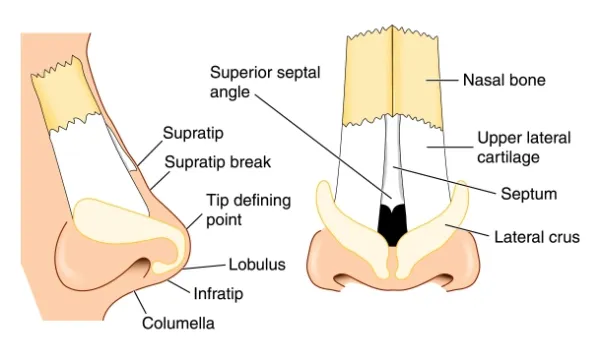Otolaryngology Coding Alert
Nail Down Correct Usage of New Bundled FESS Codes
Attempting to decipher the parenthetical notes is where it really gets tricky.
As you may be aware, many coders in the otolaryngology specialty have been voicing their concerns over CPT®'s new functional endoscopic sinus surgery (FESS) codes. The new codes, debuted in October and implemented January 1, have introduced new ways of coding bundled sinus endoscopic procedures of varying sinus combinations.
While on the surface that sounds simple enough, these new codes have presented numerous problems that have yet to be addressed by CPT® Assistant. "The confusion is that you have bundled codes for ethmoid/frontal and ethmoid/sphenoid," explains Jennifer M. Connell, CPC, COC, CENTC, CPCO, CPMA, CPPM, CPC-P, CPB, CPC-I, CEMA, owner of E2E Health Solutions in Victoria, Texas. "However, there is no bundle for ethmoid/frontal/sphenoid. "So, it begs the question, when I have a FESS on all three, which bundled codes do I use?"
As you will also see, the issue also boils down to some fundamental contradictions found within the CPT® codes' parenthetical notes. Keep reading for a full breakdown on how to properly apply the new FESS bundled codes in your practice.
Review New FESS Codes
Here's the list of each new endoscopic sinus code introduced for 2018:
- 31241 - Nasal/sinus endoscopy, surgical; with ligation of sphenopalatine artery
- 31253 - Nasal/sinus endoscopy, surgical with ethmoidectomy; total (anterior and posterior), including frontal sinus exploration, with removal of tissue from frontal sinus, when performed
- 31257 - Nasal/sinus endoscopy, surgical with ethmoidectomy; total (anterior and posterior), including sphenoidotomy
- 31259 - Nasal/sinus endoscopy, surgical with ethmoidectomy; total (anterior and posterior), including sphenoidotomy, with removal of tissue from the sphenoid sinus
- 31298 - Nasal/sinus endoscopy, surgical; with dilation of frontal and sphenoid sinus ostia (eg, balloon dilation)
Making Sense of Contradictions in CPT® Parentheticals
The first area of concern arises when you compare and contrast the different "do not report" guidelines under each respective CPT® code. For example, take a look at the parenthetical notes under CPT® code 31253:
- (Do not report 31253 in conjunction with 31237, 31254, 31255, 31276, 31296, 31298, 0406T, 0407T, when performed on the ipsilateral side)
As you can see, there is nothing here that states you cannot report this code with sphenoid sinus codes 31287 (Nasal/sinus endoscopy, surgical, with sphenoidotomy) or 31288 (Nasal/sinus endoscopy, surgical, with sphenoidotomy; with removal of tissue from the sphenoid sinus).
Now, take a look at the parenthetical notes for 31257 and 31259, respectively:
- (Do not report 31257 in conjunction with 31235, 31237, 31254, 31255, 31259, 31287, 31288, 31297, 31298, 0406T, 0407T, when performed on the ipsilateral side)
- (Do not report 31259 in conjunction with 31235, 31237, 31254, 31255, 31257, 31287, 31288, 31297, 31298, 0406T, 0407T, when performed on the ipsilateral side)
Based on these notes, there is nothing to suggest that you cannot code 31257 and 31259 with code 31276 (Nasal/sinus endoscopy, surgical, with frontal sinus exploration, including removal of tissue from frontal sinus, when performed).
Now, here's where things get confusing. Take a look at the parenthetical notes for code 31276:
- (Do not report 31276 in conjunction with 31253, 31255, 31296, 31298, when performed on the ipsilateral side)
- (For endoscopic anterior and posterior ethmoidectomy and sphenoidotomy [APS], frontal sinus exploration, antrostomy and removal of antral mucosal disease, with or without removal of polyp[s], see 31255, 31267, 31287 or 31288 and 31276)
As you can see, the first note states not to code 31276 with 31255 (Nasal/sinus endoscopy, surgical with ethmoidectomy; total (anterior and posterior)), yet the last note under 31276 states that you should report all four codes individually - including 31276 with 31255.
Here's Why the Contradiction Matters
The contradiction is important because, while codes 31253, 31257, and 31259 all include the total ethmoid, the parenthetical notes under 31276 still instructs coders to assign 31255, 31256 (or 31267), 31276, and 31287 (or 31288) when an ESS is performed on all 4 sinus cavities, according to Connell.
"Ideally, the parenthetical notes should instruct coders to one of the new combination codes when coding FESS procedures performed on the ethmoid, frontal, or sphenoid sinuses," Connell explains.
How You Should Code Combination FESS Procedures
Until the AMA releases a CPT® Assistant instructing coders on how to proceed in light of this mistake, coders need to know what CPT® codes to assign for FESS services including three or more sinus combinations. Since there is no combination code for service on the maxillary sinus, you know that 31256 (Nasal/sinus endoscopy, surgical, with maxillary antrostomy) and 31267 (Nasal/sinus endoscopy, surgical, with maxillary antrostomy; with removal of tissue from maxillary sinus) always stand on their own.
Your next step is to decide on one of two options when you are coding for the ethmoid, sphenoid, and frontal sinus. Your option is either to:
- Code ethmoid/frontal as a combination code and code sphenoid separately or
- Code ethmoid/sphenoid together and code frontal separately.
This decision ultimately boils down to which procedure code combination offers more relative value units » » (RVUs). First, take a look at the number of RVUs allowed for an ethmoid/frontal plus sphenoid combination while taking into account the multiple surgery discounts (50 percent):
- 31253 (ethmoid/frontal) + 50% 31287 (sphenoid) = 17.27 total RVUs
- 31253 +50% 31288 (sphenoid w/ tissue removal) = 17.74 total RVUs
Next, take a look at the total number of RVUs allowed for an ethmoid/sphenoid plus frontal combination:
- 31257 (ethmoid/sphenoid) + 50% 31276 (frontal) = 18.23 total RVUs
- 31259 (ethmoid/sphenoid w/ tissue removal) + 31276 = 19.0 total RVUs
As you can see based on these calculations, the combination of ethmoid/sphenoid plus frontal accrues slightly more RVUs than does the combination of ethmoid/frontal plus sphenoid. Therefore, in cases where all three FESS procedures are performed together, you should code for the option that allows for maximum reimbursement: ethmoid/sphenoid plus frontal. If maxillary sinus surgery is also included, you apply 31256 in addition to 31257/31259 and 31276.
Keep a look out for instructions from the American Medical Association (AMA) CPT® Assistant on how to definitive code these combination sets. However, until then, you should opt for the code set that offers the most RVUs.
Related Articles
Otolaryngology Coding Alert
- CPT® Coding:
Nail Down Correct Usage of New Bundled FESS Codes
Attempting to decipher the parenthetical notes is where it really gets tricky. As you may [...] - CPT® Coding:
Key on Complex Repair, Adjacent Tissue Transfer Code Differences
Rely on CPT® rules to outline the fundamentals behind both procedures. Sometimes, choosing the right [...] - ICD-10 Coding:
Rely on Instincts, Intuition When Returning Chart to Provider
Take a look at these two P code examples to maximize your ICD-10 coding skills. [...] - You Be the Coder:
Don't Confuse ATF with Fasciocutaneous Flap Placement
Question: Should I code an adjacent tissue transfer and the placement of fasciocutaneous flaps using [...] - Reader Question:
Use NPI to Differentiate Between Part A, Part B
Question: A Medicare patient has been admitted to the hospital for three days and underwent [...] - Reader Question:
Use 20680 Over Unlisted for Intraoral Implant Removals
Question: The physician performed surgery to remove a titanium screw from the floor of a [...]




